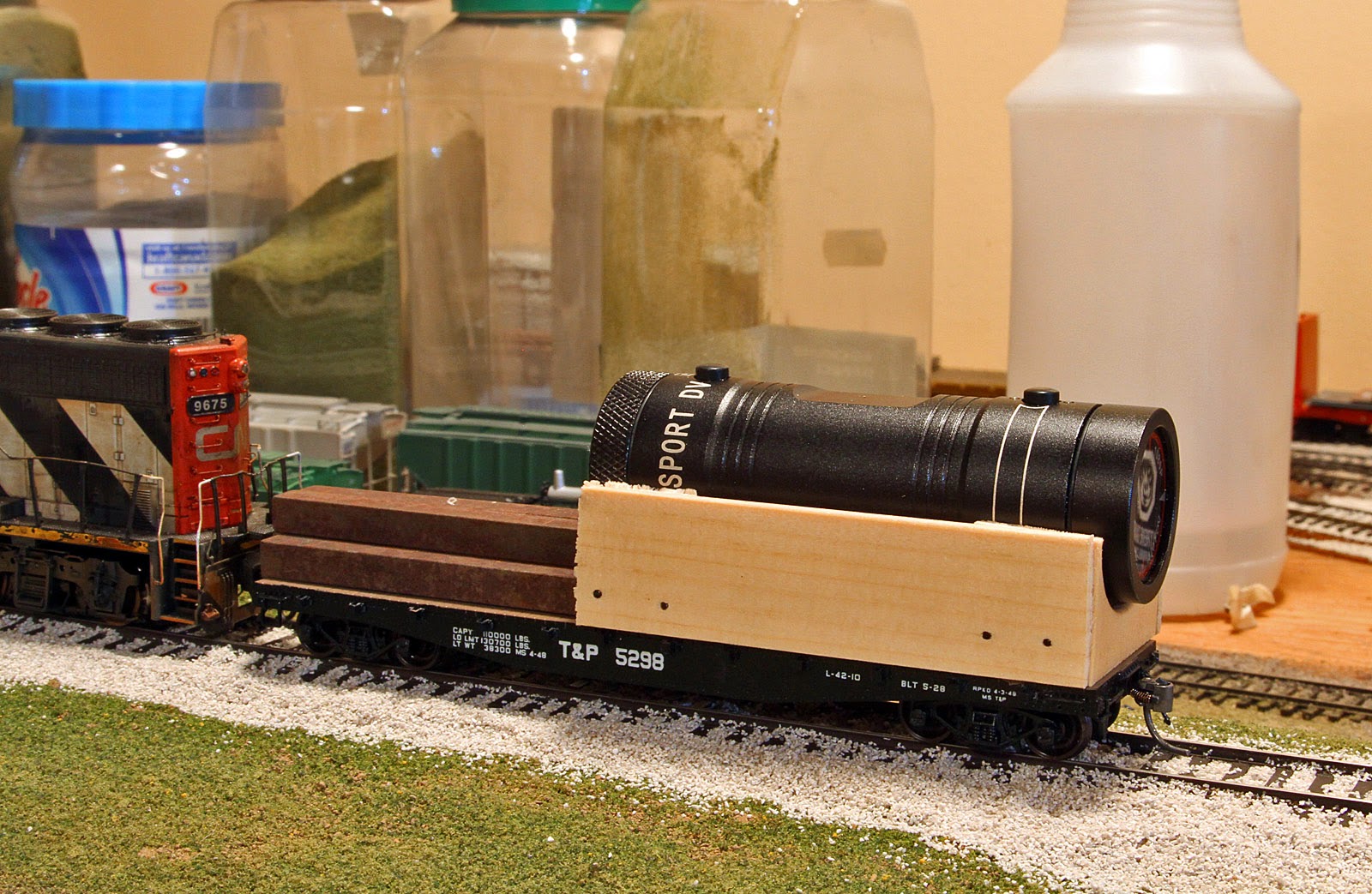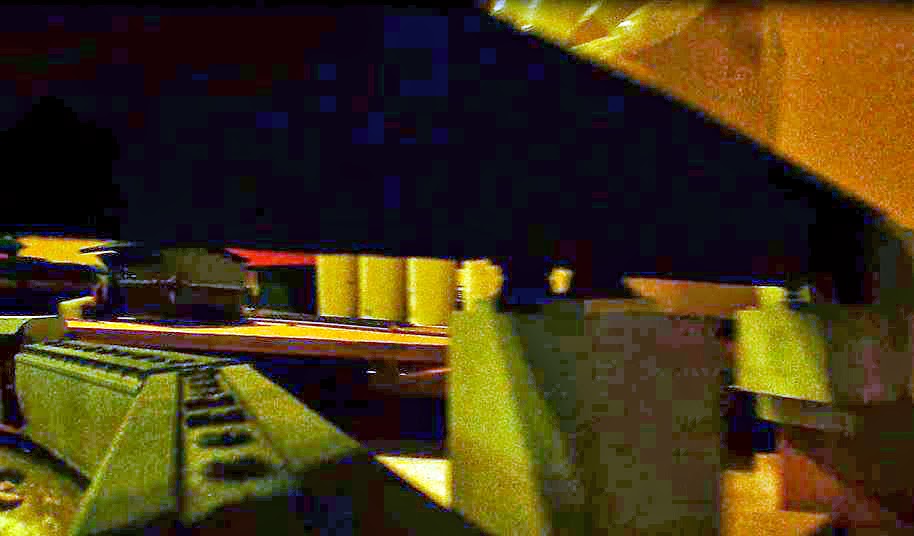 |
| The "track inspection train" ready to go with the camera riding in the cradle Mark built, and on one of his flatcars (my Intermountain 60' flatcar seemed to have some balance problems with the camera on it so Mark supplied one of his flatcars). Some square key stock has been added to the car to balance it out and add some ballast so as to stabilize the rock-and-roll over bumps and switches). Power for the train was CN 9675 (Athearn Genesis). |
Recently I’ve been playing around on Youtube, looking at videos where model railroaders have placed a small camera on a flatcar and rolled it around their layout. I found this incredibly interesting, not only to see other people’s equipment on their layout, but their creativity in planning trackwork, scenery, or even other trains on the layout. Poking around on eBay one day, I came across a small video camera designed for mounting to bicycle helmets for $30 (including shipping) that was fit nicely on an HO scale flatcar. A few days after purchasing the video camera it showed up in the mail, and in short order the camera was taking a ride around the layout. My brother Mark did an excellent job of building a small wooden cradle to hold the camera (it has a round cross-section) and off we went up and down every spur and track on the layout. I’m not sure why, but I find it quite amusing to watch the resultant video, particularly in areas of the layout not normally/easily accessible. It also occurred to me that this is more-or-less the HO scale version of a track inspection train. While it doesn’t measure the gauge or detect sub-surface rail flaws, it is nonetheless useful for evaluating spots that may need some repair, such as dips or kinks in the flextrack. The camera offers a nearly-track level view of the layout, a perspective not normally seen from our normal “helicopter” vantage point, which I think is pretty neat.
 |
| Backing into the yard (screen-capture of video). |
Overall, for $30, I think this is a good bit of fun. One thing we did learn though: depending on how you mount the camera on a flatcar, it may suddenly become an Excess Height car, so watch where you take it! Mark found out one day that, even though double stacks can fit under the bridge on our layout, when the camera is elevated to a position to simulate a rooftop-view, a bridge-camera interference problem develops (see photos below).
 |
| A rooftop view, mid-train. |
 |
| The 'black box' revealed the cause of the wreck: the car (camera mounted on it) was too high! Image from video taken just prior to impending collision. |
‘Til next time,
Cheers,
Peter.

0 comments:
Post a Comment